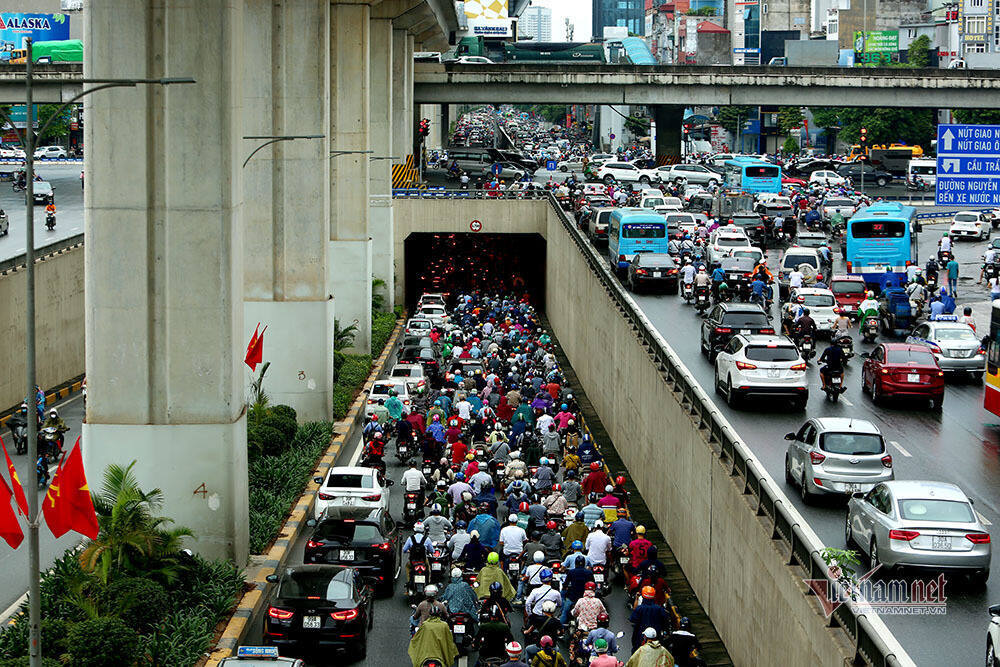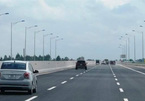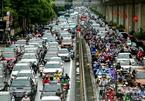
The plan is a part of a project on toll collection in some areas of the city that have traffic congestion and pollution. The project draft is from the Hanoi Transport Department and a consultancy firm.
The area subject to toll collection would be bordered by Belt Road No 3 – Thanh Tri Bridge – Phap Van – Mai Dich – Pham Van Dong – West West Lake – Vo Chi Cong – Nhat Tan Bridge – Hoang Sa – Truong Sa – Ly Son – Nguyen Van Linh – Best Road No3. The perimeter of the area is 51 kilometers, and the area covers 150 square kilometers.
To collect fees, 87 stations on 68 positions would be set up. At first, 15 stations would be set up on a trial basis in the first phase. Another 59 stations would be established in the second phase and the remaining 13 stations would be ready in the third phase.
The collection would use ETC (electronic toll collection) technology under the supervision of cameras set up at the stations. Tolls would be collected from 5am to 9pm every day, with differences in fee levels between peak and off-peak hours.
Duong Trung Dung from Cau Giay district said it was unreasonable to choose Belt Road No 3 as the boundary that splits the two areas, because it is not the line between the areas with and without traffic jams. In fact, traffic jams are even worse in the outer area of the Belt Road than in the inner city area.
“My home is just 500 meters from Belt Road No3. I travel every day I my private car and I have to go back and forth 10 times a day to go to the office and pick up my children. Will I have to pay fees for every time I go through the stations?” Dung said.
Tran Van Hieu in Linh Dam residential quarter said: “We have to go to the area because schools, hospitals, offices and multi-story buildings all are gathered there. In fact, we don’t want to enter this noisy and crowded area.”
He said that in order to ease traffic jams, the municipal authorities need to spend money to enlarge roads, rather than collect fees from people. Also, Hanoi should also encourage the use of public means of transport, including urban railways, smart buses and subways.
There are 6.4 million registered vehicles in Hanoi, including 0.6 million cars and 5.6 million motorbikes, according to the Hanoi Department of Transport.
Feasibility in doubt
Dr Tu Sy Sua, a lecturer at the University of Transport, said the fee collection in certain areas to restrict entries is applied in some countries, including the UK and Singapore.
However, the expert was concerned about the feasibility of the project if it is applied in Hanoi.
Sua thinks it’s unreasonable to choose Belt Road No 3 as the boundary because the toll collection area will be too large.
He said consultancy firms should have reasonable assessments and that the toll collection should be piloted first in one or two districts before the collection is applied to other areas.
He said that the feasibility of the project would depend on the equipment and technology to be utilized, i.e. the collection must be ‘non-stop’. There should also be sanctions on the cars which evade the fee payment.
“If the system cannot operate well, cars will have to queue up to pay the fee, which will create 87 traffic jam points in the city,” Sua warned.
Dr Phan Le Binh said Hanoi authorities need to explain how it will use the collections.
“The fee collection aims at easing traffic jams and pollution. So how it will be used to develop the infrastructure of the city?” Binh said.
When Hanoi begins collecting fees for entries to the inner city area, slated for 2025, people will have to change their habits of using private vehicles and many of them will shift to use public means of transport. From now to 2025, Hanoi needs to upgrade the public passenger transport system, including the elevated rail lines.
Hoang Hiep

Ministry of Transport proposes toll on State-invested expressway
The Ministry of Transport is consulting ministries and Government agencies on collecting tolls at sections of the North-South Expressway built from State capital.

Hanoi plans to build 87 toll booths in inner city areas to ease traffic congestion
To ease traffic congestion in the city hub, the Hanoi Department of Transport has worked out a plan to install 87 toll stations on ring roads.